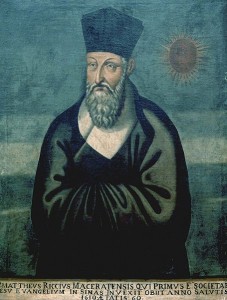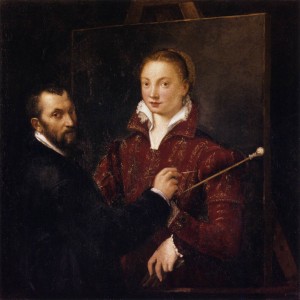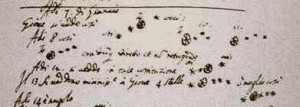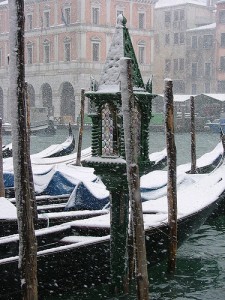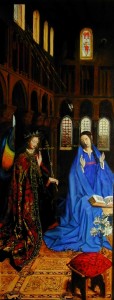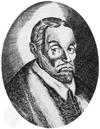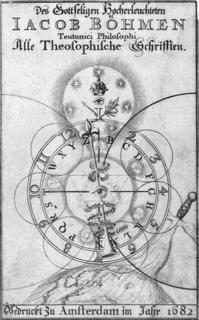(This is the second of a three part essay on Francesca Caccini and La Liberzione di Ruggiero, which Magnificat will perform October 16-18. The first part, a biographical sketch of Francesca, “About Francesca“, was posted here earlier.)
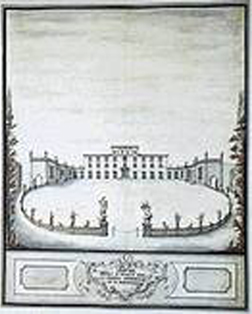
Villa Poggio Imperiale in the 17th Century
On February 3, 1625, sometime in daylight, 160 gentildonne and their husbands, and an unknown number of foreign guests rode in carriages out the southeastern gate of Florence, and half a mile up a tree-lined avenue to a villa atop the nearest hill that had very recently been renovated as the personal palace of Tuscany’s regent, Archduchess Maria Maddalena d’Austria. Leaving their carriages in a grassy courtyard guarded by two squadrons of armed cavalry, the Archduchess’ guests were welcomed into the palace by a military commander, and led to bench seats in a temporary theatre built in the villa’s loggia, to hear a new commedia in musica based on a well-known plot (two sorceresses struggling over the sexual and military future of a hapless young man). The commedia was to be followed, seamlessly, by two balletti danced by members of the court, by a ballet for horses and riders in the paved courtyard, and by a reception at which the gentildonne were served by the men who rode in the final horse ballet (while their husbands watched from above). It was the first performance of Francesca Caccini’s La liberazione di Ruggiero.
So what could La Liberazione possibly have seemed to be about in 1625? First, a bit about the plot, since the story on which it’s based is not nearly as well known now as it was then.
The show opens with a prologue sung by Neptune (a figure for Medici power) and a Polish river, The Vistola, meant to praise the guest of honor in 1625, Maria Maddalena’s visiting nephew, Wladyslaw, the crown prince of Poland. Immediately afterward, the “good witch” Melissa sails up on a dolphin’s back to explain that she has come to rescue Ruggiero from the “bad witch” Alcina’s sexual spells, restoring him both to his military duty on behalf of Christian armies and to his dynastic sexual duty as the fiancée of the woman warrior Bradamante. At Melissa’s exit, Ruggiero arrives with Alcina and her retinue of singing and dancing minions. The lovers exchange perilously mis-communicated vows, and then Alcina leaves to manage government affairs while her retinue lulls Ruggiero to sleep. Dressed as his aged African teacher Atlante, Melissa returns, awakening Ruggiero with an exhortation to return to the battle for Libya. Previous victims of Alcina’s power, turned into plants by her mind-numbing spells, beg the pair to liberate them, too. After promising to return for them, Melissa leads Ruggiero away.
When Alcina and her retinue return to find him gone, a female messenger explains that Melissa has broken Alcina’s spell. Alcina confronts Ruggiero in a long scene mixed of lamentation and ire, to no avail. Enraged at her loss of power, she calls on monsters for aid. The stage is engulfed in fire, as the now monstrous Alcina rides offstage on a dragon’s back, after which creatures who had been trapped in the bodies of the island’s plants emerge to dance. One such creature pleads with Melissa to liberate the men who are plants as well as the women. They dance, and then everyone–the players and the audience–adjourn to the courtyard to watch the horse ballet, over which the triumphant Melissa presides from a centaur-drawn chariot.
My sense is that like the other comedies on which Francesca had worked La liberazione was meant to be both entertaining and serious–to give the audience the impression they were glimpsing into the ‘real’ entertainment life of the women’s court, and at the same time to engage a particular set of anxieties about that court’s relationship to public power during the regency of the 1620s.

Arch Duchess Maria Maddalena
When Grand Duke Cosimo II died in late February, 1621, the intermittent de facto regency of his mother Christine de Lorraine was replaced by a de jure regency she was to share with his widow, Archduchess Maria Maddalena d’Austria. Christine had quietly ruled Tuscany since late in 1606, first during her husband Grand Duke Ferdinando I’s final illness and then during her son’s long, losing struggle with what seems to have been several forms of tuberculosis. According to all diplomatic accounts, Christine had been Tuscany’s absolute ruler in this period, yet the same accounts report that she had shared decision-making with her son when he was up to it, and that she had systematically arranged for her daughter-in-law to be trained for what seemed like the inevitable regency of the 1620s. (One possible interpretation of La liberazione’s plot about the struggle of two women over a man, then, would be to imagine Ruggiero as the ailing Cosimo, his wife and his mother as the sorceress antagonists: but all diplomatic accounts also agree that the three worked well together.) Read more…
